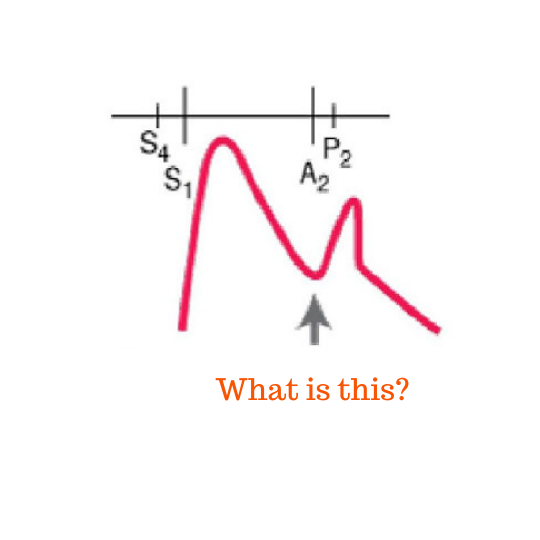ECG Question-1
Contents1 What is the most probable diagnosis of ECG given below?2 What is the mechanism...
Hypothalamus and Reproduction
Contents1 Not true of GnRH cells is2 Hypothalamus is directly connected with the posterior lobe...
Sarcoma of the uterus
Contents1 Most common sarcoma in the uterus is2 Not true of uterine sarcoma3 Not a...
Image Question-22
Contents1 What is the diagnosis?2 What is the diagnosis from the given histopathological Image?3 In...
Ferruginous body
Contents1 Ferruginous body is commonly suggestive of –2 Which is called as ‘grinder’s disease’ ?3...
Bony Landmarks
Contents1 Cartilages of the ——————- ribs form the costal margins2 Which is the lowest cartilage...
Endometrial Carcinoma
Contents1 Corpus cancer syndrome includes all except2 Fluorescence Imaging for Robotic Endometrial Sentinel lymph node...
Carcinoma Cervix
Contents1 Poor prognosis is seen in the following cancer type2 The highest regional incidence and...
Neurology Notes -Neuropathy
Contents1 Pain due to intermittent claudication of the cauda equina is most commonly caused by2...
Physical Examination -VI
All of the following are TRUE regarding murmur of TR EXCEPT –
ANSWER -A
Murmur of TR is loudest at the lower left sternal border
Increases in intensity with inspiration - Carvallo’s sign
Which of the following always signify structural heart disease –
ANSWER -B
Diastolic heart murmurs always signify structural heart disease.
Valsalva manoeuvre [strain phase] decreases the intensity or duration of all left-sided murmurs EXCEPT -
ANSWER -C
Valsalva manoeuvre strain phase decreases the intensity or duration of all left-sided murmurs except
mitral valve prolapse (MVP) and hypertrophic cardiomyopathy (HOCM)
All of the following are TRUE for Strain phase of Valsalva manoeuvre EXCEPT -
ANSWER -C
Strain phase of Valsalva manoeuvre - ↑ ventricular volume,
Strain phase of Valsalva manoeuvre MURMURS -
↑ MVP, ↑ HOCM
↓ AS, ↓ PS, ↓ MS, ↓ AR, ↓ MR, ↓VSD, ↓ PDA
During the initial hypotension after amyl nitrite inhalation all of the following murmurs decrease in intensity EXCEPT –
ANSWER -D
During the initial hypotension after amyl nitrite inhalation, murmurs of MR, VSD, and AR decrease in intensity, because of decrease in BP and systemic vascular resistance, whereas the murmur of AS increases.
All of the following murmurs increase after hand grip exercise EXCEPT –
ANSWER -D
Murmurs of MR, VSD, and AR - increase with hand grip exercise.
HOCM – murmur decreases with hand grip exercise
Most common cardiac cause of clubbing –
ANSWER -A
Cyanotic heart disease.
Infective endocarditis usually causes a milder form of clubbing, whereas in congenital cyanotic heart disease, gross, drumstick appearance may be seen.
What is the normal Lovibond angle –
ANSWER -B
Lovibond angle - normal <165° angle – This is the angle between the nailbed and the fold (cuticula).
Clubbing usually develops first in the –
ANSWER -A
Clubbing usually develops first in the thumb and forefinger, and occurs in the other fingers later.
All of the following are TRUE regarding Unilateral clubbing in the upper extremity EXCEPT –
ANSWER -D
Unilateral clubbing in the upper extremity may be due to anomalies of the aortic arch, aortic or subclavian artery aneurysm, pulmonary hypertension with patent ductus arteriosus, and brachial arteriovenous aneurysm or fistula.
Physical Examination -V
In which artery character of the pulse is best appreciated –
ANSWER -A
character of the pulse is best appreciated at the Carotid Artery.
What is pulsus mollis?
ANSWER -B
Low tension pulse - pulsus mollis - the vessel is soft or impalpable between beats.
In which condition vessels feel rigid even between pulse beats –
ANSWER -A
High tension pulse - pulsus durus - vessels feel rigid even between pulse beats.
Quickly rising and quickly falling pulse is seen in aortic regurgitation is called –
ANSWER -C
Quickly rising and quickly falling pulse -pulsus celer - is seen in aortic regurgitation
Pulse which is characterized by two beats per cardiac cycle where both are systolic waves –
ANSWER -A
Dicrotic pulse: is characterized by two beats per cardiac cycle, one systolic and the other diastolic.
Pulsus alternans: - strong pulse followed by a weak pulse over and over again: indicates systolic heart failure
A2–P2 interval increase in all of the following conditions EXCEPT-
ANSWER -C
Pulmonary arterial hypertension - narrowly split or even a singular S2
MR and VSD – A2–P2 interval increase -Premature closure of Aortic Valve
RBBB – A2–P2 interval increase -Delay in Pulmonic Valve Closure
Paradoxical splitting is seen in all of the following EXCEPT -
ANSWER -D
Reversed or paradoxical splitting - pathologic delay in aortic valve closure, such as that which occurs in patients with left bundle branch block, right ventricular pacing, severe AS, HOCM, and acute myocardial ischemia.
Interval narrows with inspiration, the opposite of what would be expected under normal physiologic
conditions.
Only right sided sound that decreases in intensity with inspiration –
ANSWER -C
Pulmonic ejection sound - only right sided sound that decreases in intensity with inspiration.
All of the following are high-pitched diastolic Sounds EXCEPT –
ANSWER -B
TUMOR PLOP - low-pitched sound.
Most common cause of a mid-systolic murmur in an adult-
ANSWER -A
AS is the most common cause of a midsystolic murmur in an adult.
Which is TRUE regarding Murmur of AORTIC STENOSIS and HOCM in Valsalva maneuver -
ANSWER -C
Valsalva maneuver is to distinguish the murmur of aortic stenosis from hypertrophic obstructive cardiomyopathy.
Aortic stenosis will soften or not change
Murmur of HOCM becomes loud with Valsalva.
HOCM Murmur intensify in case of all of the following EXCEPT–
ANSWER -A
Systolic murmur of HOCM - louder during the strain phase of the Valsalva maneuver and
after standing quickly from a squatting position.
HOCM - murmur becomes softer with passive leg raising and when squatting.
NONEJECTION CLICK is seen in –
ANSWER -C
MVP murmur can be distinguished from a hypertrophic cardiomyopathy murmur by the presence of a mid-systolic click which is virtually diagnostic of MVP.
Classic MVP is diagnosed when the mitral valve leaflets are displaced more than --------------------- mm above the mitral annulus high points with more than -----------------mm thickness of the mitral valve leaflets.
ANSWER -B
MVP - mitral valve leaflets are displaced > 2 mm above the mitral annulus high points.
CLASSIC MVP: mitral valve leaflets thickness > 5mm
Non-Classic MVP: mitral valve leaflets thickness > 5 mm
Physical Examination -IV
Collapsing pulse is associated with all of the following EXCEPT-
ANSWER -B
Collapsing pulse - associated with increased stroke volume of the left ventricle and decrease in the peripheral resistance leading to the widened pulse pressure of aortic regurgitation.
Bisferiens pulse is seen in –
ANSWER -A
Bisferiens pulse is seen in : aortic regurgitation with or without concurrent aortic stenosis and
severe HOCM..
When a prominent ‘a’ waves present in severe AS that reflects –
ANSWER -C
The jugular venous pulse is usually normal, but prominent a waves may be present, reflecting reduced right ventricular (RV) compliance due to hypertrophy of the interventricular septum. <
Bernheim effect – Aortic Stenosis – LVH – LV Pressure Overload - Bulging of the interventricular septum into the right ventricle - impedance in RV filling - elevated jugular venous pressure - prominent venous "a" wave- Right ventricular failure - right heart failure that sometimes precedes left heart failure.
Which type of Aortic Stenosis complication commonly result in Heart Block –
ANSWER -B
In calcific aortic stenosis - the calcification in and around the aortic valve can progress and extend to involve the electrical conduction system of the heart. If that occurs, the result may be heart block.
Severity of the AS correlates with all of the following EXCEPT –
ANSWER -A
Intensity of the systolic murmur does not correspond to the severity of aortic stenosis. Timing of the peak and the duration of the murmur corresponds to the severity of aortic stenosis.
The more severe the stenosis- longer duration of the murmur and peaks at late systole.
Hyperdynamic LV in a case of Aortic Stenosis Suggest –
ANSWER -C
Hyperdynamic LV in a case of AS - suggests concomitant aortic regurgitation or mitral regurgitation.
Ejection click in AS is common in –
ANSWER -A
Ejection click is common in children and young adults with congenital aortic stenosis – mobile valve leaflets.
Elderly individuals with acquired calcific aortic stenosis- cusps become immobile and severely calcified.
Elderly individuals with acquired calcific aortic stenosis- cusps become immobile and severely calcified.
Pulsus paradoxus is common in all of the following EXCEPT –
ANSWER -D
Pulsus paradoxus refers to a fall in systolic pressure >10 mmHg with inspiration that is seen in patients with pericardial tamponade –
also is described in those with –
- Massive pulmonary embolism,
- Hemorrhagic shock,
- Severe obstructive lung disease,
- Tension pneumothorax
Pulsus paradoxus is present when the measured pressure difference exceeds – [SBP when korotkoff sound heard in expiration - SBP when korotkoff sound heard independent of respiration]
ANSWER -A
A pulsus paradoxus may be palpable at the brachial artery or femoral artery level when the pressure difference exceeds 15 mmHg.
Pulsus paradoxus is measured by noting the difference between
the systolic pressure at which the Korotkoff sounds are first heard
(during expiration) and the systolic pressure at which the Korotkoff
sounds are heard with each heartbeat, independent of the respiratory
phase.
Pulsus alternans is seen in patients with –
ANSWER -B
Pulsus alternans is seen in patients with severe LV systolic dysfunction
Which is FALSE regarding Bruit in Carotid Artery –
ANSWER -A
Absence of a bruit does not exclude the presence of significant luminal
Obstruction.
Obstruction is usually severe - If a bruit extends into diastole or if a thrill is present.
All of the following are correct for S4 EXCEPT -
ANSWER -D
S4 SUGGESTS -
- Palpable presystolic impulse
- Reduced LV compliance
- Forceful contribution of atrial contraction
Triple cadence beat at the cardiac apex is seen in -
ANSWER -C
HOCM sometimes cause a triple cadence beat at the apex - palpable S4 with two components of
the Bisferiens systolic pulse.
Pulsus Paradoxux is present in -
Pulsus paradoxus typically manifests in patients with pericardial disease, notably, cardiac tamponade and constrictive pericarditis. Other cardiac causes include right ventricular infarction and restrictive cardiomyopathy.
Physical Examination -III

Dicrotic pulse with peaks in systole and diastole. Seen in patients with sepsis or during IABP with inflation just after the dicrotic notch.
Positive abdominojugular reflux maneuver correlates with the pulmonary artery pressure and thus is a marker for
ANSWER -A
A positive AJR test correlates with the pulmonary artery pressure and thus is a marker for right heart dysfunction, specifically right ventricular failure.
Left ventricular failure produces positive abdominojugular reflux when –
ANSWER -C
Left ventricular failure produces positive abdominojugular reflux sign when the PCWP is more than 15 mmHg.
Which of the following doesn’t produce POSITIVE ABDOMINOJUGULAR REFLUX-
ANSWER -D
• Left ventricular failure also produces POSITIVE ABDOMINOJUGULAR REFLUX , usually when the PCWP is more than 15 mmHg.
• Cardiac tamponade does not lead to a positive hepatojugular reflux.
• Constrictive pericarditis, right ventricular failure (commonly due to infarction), and restrictive cardiomyopathy are conditions that frequently produce a positive hepatojugular reflux.
Presence of a right atrial pressure >10 mmHg suggests a pulmonary artery wedge pressure of –
ANSWER -C
Presence of a right atrial pressure >10 mmHg (as predicted on bedside examination)
had a positive value of 88% for the prediction of a pulmonary artery
wedge pressure of >22 mmHg.
Very low diastolic blood pressures may be recorded in patients with –
ANSWER -C
Very low (even 0 mmHg) diastolic blood pressures may be
recorded in patients with chronic, severe AR or a large arteriovenous
fistula because of enhanced diastolic “run-off.”
Bobbing motion of the patient's head with each heart beat seen in -
ANSWER -D
de Musset sign - Bobbing motion of the patient's head with each heartbeat - Aortic Regurgitation
“White coat hypertension” is defined by at least ………………..separate clinic-based measurements >140/90 mmHg and at least ……………… non-clinic-based measurements <140/90 mmHg.
ANSWER -B
“White coat hypertension” is defined by at least three separate clinic-based measurements >140/90 mmHg and at least two non-clinic-based measurements <140/90 mmHg.
Orthostatic hypotension is defined by a fall in systolic pressure >……………..mmHg or in diastolic pressure >……………….. mmHg in response to assumption of the upright posture from a supine position within ………….. min.
ANSWER -C
Orthostatic hypotension is defined by a fall in systolic pressure >20 mmHg or in diastolic pressure >10 mmHg in response to assumption of the upright posture from a supine position within 3 min.
Pulsus parvus et tardus is seen in –
ANSWER -A
weak and delayed pulse - pulsus parvus et tardus - defines severe aortic stenosis.
Physical Examination – II
Which of the following is helpful in determining specific allergen sensitivity -
ANSWER -D
A radioallergosorbent test (RAST) is a blood test using radioimmunoassay test to detect specific IgE antibodies, to determine the substances a subject is allergic to.
blood tests look for IgE antibodies in your blood that are specific to a certain food or other allergen. The higher the level of IgE, the more likely you are to have an allergy to that particular food.
Allergy tests are performed with proven allergens EXCEPT –
ANSWER -D
To ensure that the skin is reacting in the way it is supposed to, all skin allergy tests are also performed with proven allergens like histamine, and non-allergens like glycerin.
Bifid uvula has been described in patients with –
ANSWER -A
Bifid uvula seen in patients with Loeys-Dietz syndrome
All of the following are correct for Loeys–Dietz syndrome EXCEPT -
ANSWER -D
Abnormally long limbs and fingers seen in Loeys–Dietz syndrome.
Common manifestations of Loeys–Dietz and Marfan syndromes includes all of the following EXCEPT –
ANSWER -C
Findings of hypertelorism (widely spaced eyes), bifid or split uvula, and skin findings such as easy bruising or abnormal scars may distinguish Loeys–Dietz from Marfan syndrome.
There is overlap in the manifestations of Loeys–Dietz and Marfan syndromes, including increased risk of ascending aortic aneurysm and aortic dissection, abnormally long limbs and fingers, and dural ectasia.
Orange tonsils are characteristic of –
ANSWER -B
Tangier's disease develop various cholesterol ester depositions. These are especially visible in the tonsils, as they may appear yellow/orange.
High-density lipoproteins are created when -------------------- combines with cholesterol and phospholipids.
ANSWER -C
Apolipoprotein A1 is the major protein component of HDL particles in plasma.
Which of the following is more effective in predicting heart attack risk –
ANSWER -D
The INTERHEART study found that the ApoB100 / ApoA1 ratio is more effective at predicting heart attack risk, in patients who had had an acute myocardial infarction, than either the ApoB100 or ApoA1 measure alone.
ALL of the following is TRUE for ApoA1 Milano EXCEPT–
ANSWER -B
Significantly reduced cardiovascular disease, even though it caused a reduction in HDL levels and an increase in triglyceride levels.
It is characterised by the replacement of arginine by cysteine at position 173.
Blue sclerae are a feature of –
ANSWER -D
Osteogenesis imperfecta are born with defective connective tissue, or without the ability to make it, usually because of a deficiency of Type-I collagen
Which of the following is TRUE about Osteogenesis imperfecta EXCEPT -
ANSWER -B
Hearing loss frequently begins between the second and fourth decade of life, and may be conductive, sensorineural, or mixed in nature.
Histologically "fish-scale" bone appearance is seen in –
ANSWER -D
Type VI Osteogenesis Imperfecta has same clinical features as Type IV and it is distinguished histologically by "fish-scale" bone appearance.
Osteogenesis Imperfecta has deficiency of -
ANSWER -A
Osteogenesis Imperfecta has deficiency of Type-I collagen.
The five most common types are:
- Type I: skin, tendon, vasculature, organs, bone (main component of the organic part of bone)
- Type II: cartilage (main collagenous component of cartilage)
- Type III: reticulate (main component of reticular fibers), commonly found alongside type I
- Type IV: forms basal lamina, the epithelium-secreted layer of the basement membrane
- Type V: cell surfaces, hair, and placenta
Hollenhorst plaque found in –
ANSWER -B
Hollenhorst plaque is a cholesterol embolus lodged within the retinal vessel that originated from an atheromatous plaque in a more proximal (upstream) vessel, usually the internal carotid artery.
All of the following are TRUE regarding Hollenhorst plaque EXCEPT –
ANSWER -B
Hollenhorst plaque is a cholesterol embolus lodged within the retinal vessel that originated from an atheromatous plaque in a more proximal (upstream) vessel, usually the internal carotid artery.
Most common cause of saddle-nose deformity –
ANSWER -B
The most common cause is nasal trauma.
Obstructive lung disease is suggested by-
ANSWER -C
• Pectus carinatum - pigeon chest
• Pectus excavatum -funnel chest
• COPD - barrel chest deformity
Straight back syndrome is usually associated with -
ANSWER -A
The straight back syndrome, consisting of loss of normal upper thoracic spinal curvature.It is associated with cardiac murmurs and radiographic cardiomegaly. It is considered a form of 'pseudoheart disease' which has been attributed to the heart in the reduced AP diameter of the chest.
Usually this condition is accompanied by Pectus excavatum.
Systolic pulsations over the liver indicates severe –
ANSWER -D
Systolic pulsations over the liver signify severe tricuspid regurgitation.
Patients with popliteal artery aneurysms frequently have abdominal aortic aneurysm in –
ANSWER -D
Patients with popliteal artery aneurysms frequently have AAAs (25-50% of cases).
Most common peripheral arterial aneurysms are –
ANSWER -A
About 70% of peripheral arterial aneurysms are popliteal aneurysms; 20% are iliofemoral aneurysms. Aneurysms at these locations frequently accompany abdominal aortic aneurysms, and > 50% are bilateral.
Fingerized thumb is seen in –
ANSWER -D
Holt-Oram syndrome have an unopposable, “fingerized” thumb.
Arachnodactyly is seen in all of the following EXCEPT –
ANSWER -D
Marfan syndrome, Ehlers-Danlos syndrome,Loeys–Dietz syndrome, congenital contractural arachnodactyly, and homocystinuria.
Rubinstein-Taybi syndrome - Broad thumbs and broad first toes and clinodactyly of the 5th finger
All of the following are TRUE for Osler’s nodes EXCEPT –
ANSWER -A
Osler’s nodes are tender, raised nodules on the pads of the fingers or toes. It is caused by immune complex deposition.
What % of endocarditis patients will have Osler's nodes?
ANSWER -C
10–25% of endocarditis patients will have Osler's nodes
Red spots with white or pale centres, seen on the retina are called =
ANSWER -A
Roth's spots, also known as Litten spots or the Litten sign. Roth's spots are non-specific red spots with white or pale centres, seen on the retina and although traditionally associated with infective endocarditis.
It is also seen in a number of other conditions including hypertension, diabetes, collagen vascular disease, extreme hypoxia, leukemia and HIV.
In Infective endocarditis JANEWAY LESIONS most commonly seen in –
ANSWER -B
Janeway lesions are rare, non-tender, small erythematous or haemorrhagic macular, papular or nodular lesions on the palms or soles.
Most commonly found on the palms and soles, particularly on the base of the thumb and little finger.
Cannon a wave in JVP seen in –
ANSWER -A
Cannon a wave occurs with atrioventricular (AV) dissociation and right atrial contraction against a closed tricuspid valve.
CVP are made in centimeters of water when converted to millimeters of mercury the conversion is –
ANSWER -C
1.36 cmH2O = 1.0 mmHg
Normally, the venous pressure should fall by at least--------------- mmHg with inspiration –
ANSWER -A
Normally, the venous pressure should fall by at least 3 mmHg with inspiration
Kussmaul’s sign is seen in all of the following EXCEPT –
ANSWER -C
Kussmaul’s sign is defined by either a rise or a lack of fall of the JVP with inspiration
and is classically associated with constrictive pericarditis, although
it has been reported in patients with restrictive cardiomyopathy, massive pulmonary embolism, right ventricular infarction, and advanced left ventricular (LV) systolic heart failure.
Physical Examination-I
What amount of deoxyhemoglobin required to produce central cyanosis?
ANSWER -A
It is classically described that - 5.0 g/dL of deoxyhemoglobin or greater is required to produce central cyanosis. This was based on an estimate of capillary saturation based on a mean of arterial versus peripheral venous blood gas measurements.
Since estimation of hypoxia is usually now based either on arterial blood gas measurement or pulse oximetry, this is probably an overestimate, with evidence that levels of 2.0 g/dL of deoxyhemoglobin may reliably produce cyanosis.
Cyanosis of the lower extremity but not involving the upper extremity and the head is called –
ANSWER -B
Differential cyanosis is the bluish coloration of the lower but not the upper extremity and the head.
Differential cyanosis refers to isolated cyanosis affecting the lower but not the upper extremities in a patient with a large patent ductus arteriosus (PDA) and secondary pulmonary hypertension with right-to-left to shunting at the great vessel level.
Differential Cyanosis is seen in which of the following condition?
ANSWER -C
Patients with a large ductus develop progressive pulmonary vascular disease, and pressure overload of the right ventricle occurs. As soon as pulmonary pressure exceeds aortic pressure, shunt reversal (right-to-left shunt) occurs. Cyanosis of Lower Limb Appears.
The upper extremity remains pink because the brachiocephalic trunk, left common carotid trunk and the left subclavian trunk is given off proximal to the PDA. This is called Differential Cyanosis.
Malar Flush may be seen in cases of advanced –
ANSWER -C
Malar flush is a plum-red discolouration of the high cheeks classically associated with mitral stenosis due to the resulting CO2 retention and its vasodilatory effects. Also Called Malar telangiectasias.
Palmar crease xanthomas are specific for which type hyperlipoproteinemia –
ANSWER -C
Type III hyperlipoproteinemia -
Two types of skin signs - palmar xanthomata or orange discoloration of skin creases, and tuberoeruptive xanthomata on the elbows and knees. It is characterized by the early onset of cardiovascular disease and peripheral vascular disease.
Xanthomas on the palms of the hands, a condition called xanthoma striata palmaris, is specific to hyperlipoproteinemia type III and has not been reported in any other disorder.
Which is called broad beta disease ?
ANSWER -C
Type III hyperlipoproteinemia
Also known as broad beta disease or dysbetalipoproteinemia. Most common cause for this form is the presence of ApoE E2/E2 genotype.
Frederickson Classification is for –
ANSWER -B
Frederickson Classification of dyslipidemias
The most common dyslipidemias are types IIA, IIB, and IV.
Cobblestoned appearance of the skin in the axilla and neck creases seen in –
ANSWER -C
Pseudoxanthoma elasticum, a disease associated with premature atherosclerosis, is manifested by a leathery, cobblestoned appearance of the skin in the axilla and neck creases and by angioid streaks on funduscopic examination.
Extensive lentiginoses in skin with multiple atrial myxomas are found in –
ANSWER -A
Carney complex and its subsets LAMB syndrome and NAME syndrome are autosomal dominant conditions comprising myxomas of the heart and skin, hyperpigmentation of the skin (lentiginosis), and endocrine overactivity.
Carney triad is characterized by all of the following EXCEPT –
ANSWER -D
Carney triad (CT) is characterized by the coexistence of three types of neoplasms, mainly in young women, including gastric gastrointestinal stromal tumor, pulmonary chondroma, and extra-adrenal paraganglioma.
LUPUS PERNIO is pathognomonic of which condition –
ANSWER -D
Lupus pernio is a chronic raised indurated (hardened) lesion of the skin, often purplish in color. It is seen on the nose, ears, cheeks, lips, and forehead. It is pathognomonic of sarcoidosis.
All of the following are correct for Lupus pernio EXCEPT –
ANSWER -B
Lupus pernio is associated with poor outcomes and lower rates of resolution.










